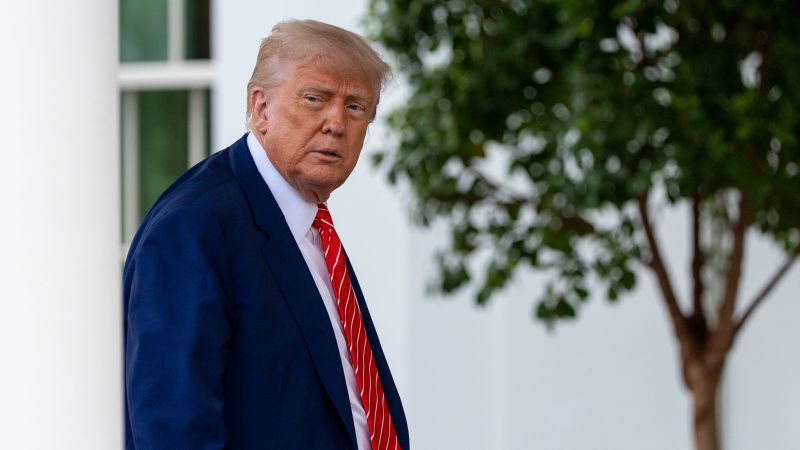President Donald Trump is set to embark on his first significant international trip during his second term in office, beginning Monday. This trip aims to reinforce relations with three pivotal Middle Eastern allies: Saudi Arabia, Qatar, and the United Arab Emirates. As Trump departs, he finds an opportunity to establish his negotiating prowess on the global platform, pivotal for achieving economic wins and bolstering ties with these nations.
On his journey, Trump will arrive in Riyadh, Saudi Arabia, on Tuesday, with subsequent stops planned in Doha, Qatar, and Abu Dhabi, United Arab Emirates, as the week unfolds. The trip has echoes of Trump’s inaugural international venture back in 2017, aligning his administration’s focus on the Middle East and its significance in global geopolitics.
Press Secretary Karoline Leavitt described the trip as a “historic return to the Middle East” that represents Trump’s ongoing vision for a “proud, prosperous, and successful” Middle East. Leavitt emphasized the importance of cooperative relationships between the United States and Middle Eastern nations, spotlighting the defeat of extremism through commerce and cultural exchanges.
However, the geopolitical landscape is far different from Trump’s initial term. The shifting international relations and the crises in Ukraine and Israel have significantly altered global dynamics, leading to complex challenges in diplomacy and trade that Trump will need to navigate during his visit.
Despite these headwinds, the trip affords Trump the chance to accumulate economic achievements, celebrate the ceremonial aspects of presidential travel, and accentuate the strengthening partnerships with these key allies. Observers note that the unspoken topics during this visit may carry as much weight as the spoken commitments.
**Pomp and Circumstance**
The trip promises to include grand gestures from Trump’s counterparts. Expectations are that he will receive a grand welcome, reminiscent of his previous visit where his likeness was displayed on the Ritz-Carlton. Leaders keen on establishing favorable relations are anticipated to extend their hospitality, offering Trump opportunities to forge essential deals without facing criticism.
Political analysts suggest that during his visit, Trump may meet with U.S. service members stationed at the airbase in Qatar. Such engagements foster goodwill and reinforce American military presence in the region. The president’s past visit resulted in striking imagery, including the famous photo of Trump alongside Egypt’s President Abdel Fattah al-Sisi and Saudi Arabia’s King Salman holding a glow orb—what will be this trip’s defining image remains to be seen.
A primary objective during this visit is the negotiation of “economic agreements” with these Gulf nations. Officials convey that Trump anticipates securing substantial trade deals that would promote investments from Gulf states into America. Anticipation surrounds potential agreements focusing on burgeoning sectors like artificial intelligence and cryptocurrency, showcasing a shift in economic engagement from previous years.
Trump is also expected to push for discussions on lowering oil prices, an effort tied to his campaign promise of reducing costs for American consumers. The approach underscores the intricacies of balancing U.S. economic interests with those of its allies in a potentially volatile energy market.
The symbolic ramifications of this trip are noteworthy, particularly as the administration seeks to depict strong ties with these nations amid geopolitical tensions. With Qatar playing a critical role as a mediator between Israel and Hamas, and Saudi Arabia’s involvement in diplomatic negotiations with Russia, the stage is set for crucial discussions surrounding broader international policies.
As the president journeys, he faces considerable scrutiny and pressures, especially with ongoing nuclear negotiation talks with Iran, led by his envoy, Steve Witkoff. Officials indicate a willingness to proceed with negotiations, recognizing the vital interests Gulf states have in preventing escalation and potential conflict.
**Top Aides and Advisors**
This trip comes at a time of apparent upheaval within Trump’s national security team, following reports of changes in leadership roles. The delegation accompanying Trump will consist of several senior officials including Secretary of State Marco Rubio and others who will join the president in meetings throughout the trip, showcasing the administration’s seriousness in addressing key regional issues.
Nonetheless, there are sensitive matters that may not be publicly addressed, such as discussions around Saudi Arabia’s human rights records and the overall treatment of women. The absence of a direct visit to Israel marks a significant shift in travel emphasis amid changing regional dynamics post-October 7, when Hamas’s escalated violence reignited tensions with neighboring states.
As discussions about future agreements with Arab nations, regarding potential normalization with Israel, continue, retention of strategic interests in the region remains central. Crown Prince Mohammed bin Salman has made clear Saudi Arabia’s conditions for such normalization, emphasizing the need for Palestinian statehood and peace in Gaza.
The complex nature of these ongoing negotiations and regional security concerns creates a challenging backdrop for Trump’s visit, with both immediate and long-term implications for U.S. foreign policy. As this journey unfolds, the dynamics fostered from these interactions could pave the way for future diplomatic initiatives and economic collaborations, transforming the existing frameworks of international relations.



